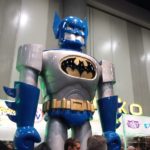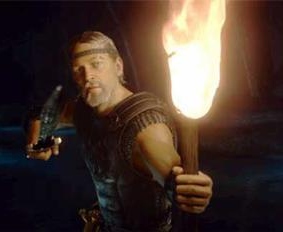Finally went to see the new Star Trek movie on Friday, and enjoyed it quite a bit. As a long-term fan (if a lapsed one — I only watched the first 3-4 seasons of DS9, and gave up on Voyager and Enterprise after only a few episodes each, and still haven’t seen Nemesis) I liked it a lot.
We went again Sunday afternoon to see it in IMAX, but the 4:00 showing sold out while we were in line. So we bought tickets for 7:10 and bummed around the mall for the next three hours. Not my first choice, but with Terminator: Salvation taking over the IMAX screens in a few days, it was a limited window.
So we were in the movie during the earthquake.
Quake
Not that I noticed. I’d just leaned over to Katie to whisper something about a music cue reminding me of another soundtrack, so I was moving, and didn’t notice that the chair and floor were moving. (Similarly, I managed to miss the Whittier Narrows quake despite the fact that everyone I knew felt it. As near as I could tell, I must have been standing at or walking to/from my locker at the time.) But a murmur went through the entire audience as they realized what had just happened.
The timing was perfect, too — right at the point that characters in the film open a huge, loud, grinding door to a remote outpost. People thought at first that it was the speakers rumbling. Everyone settled down immediately and went back to watching the movie, but it was the second most popular topic of conversation among people leaving afterward.
Crash
It reminded me of another real-world/movie confluence, way back when I saw Star Trek VI: The Undiscovered Country. That film opened with a massive explosion in space that sent a shock wave so far that it hit Captain Sulu’s ship, the Excelsior. Either at the moment of the explosion or at the moment it hit the ship, we heard an incredibly loud BOOM!, and thought at first that it was just a very impressive sound effect…until we noticed that the curtain was draped across a quarter of the screen. The curtain rod had broken during the movie. After a few minutes they stopped the movie, canceled a showing of something else, and moved us all over into another theater (it was opening night, and they had a theater full of Star Trek fans who’d waited for several hours to get in — they were not going to risk our wrath by sending us home, even with refunds).
Back to the Film
Judging by audience reaction, there were definitely lots of people seeing it for the first time today, so I’ll keep this non-spoilery as much as possible. Update: I’ve also posted this to my reviews site.
- The film manages to recapture the Kirk, Spock and McCoy dynamic that gave the original show its heart.
- Each character gets at least something to do, even if it does focus heavily on Kirk and Spock.
- The actors really manage to convey the same characters, rather than new characters with the same names. Especially McCoy and Spock. Karl Urban in particular seems to be channeling DeForest Kelley the way Ewan MacGregor channeled Alec Guinness in the Star Wars prequels. (And yes, Kirk is different, but there’s a reason for it, and that reason is critical to the story and his character’s journey.)
- The plot moves and holds together (mostly).
- The effects of course are incredible.
- They remembered that Trek can have humor — something that ST: TNG and later shows seemed to avoid as if it would somehow taint their artistic value (except when Q was around).
- The nods to established elements of the series, from character quirks to design elements to music cues, that are there if you know what to look for, but don’t bog down the story if you don’t.
I had no problems with the obvious canon changes, and thought that the huge event 1/3 of the way in was probably the best way they could recapture dramatic suspense and establish the idea that anything can happen.
In fact, the things that bothered me have very little to do with other versions of Star Trek. Again, trying to be as non-spoilery as I can for the people who haven’t seen it.
- Supernovas are not that dangerous unless you’re in the same solar system. For planet X to be destroyed, it would have to have been that planet’s sun that went supernova.
- Another planet, to provide the view that it offered of a significant event, would have to have been a moon of the planet on which that event took place.
- Engineering doesn’t look like a spaceship. It looks like a brewery.
- It relies heavily on the same dead-relative-as-motivation trope that’s bothering me so much in Flash: Rebirth. But I can see what they were going for and why they did it.
- A piece of miracle technology is invented which would revolutionize space travel to the point that it would make any further voyages irrelevant, and will most likely be ignored because of this. (Of course, the TV series did the same thing all the time.)
Music
Also, while I liked Michael Giacchino’s music in context, it’s very repetitive. The theater was playing the score while we waited for the film to start, and an awful lot of it is the same theme, over and over, in different arrangements.
My favorite Star Trek music is a toss-up between James Horner’s scores for The Wrath of Khan and The Search for Spock, and Cliff Eidelman’s score for The Undiscovered Country. We were talking about the music before the movie, and neither of us could think of anything else Eidelman had done, so I looked him up on IMDB. It turns out that he’s written music for about 20 films since Star Trek VI, and I recognized almost all of them…I just hadn’t actually seen any of them.


